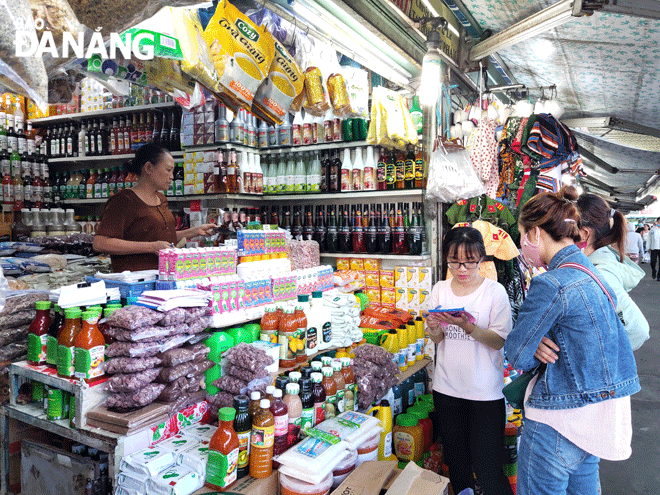Efforts to maintain food safety markets
The Da Nang's Food Safety Management Board has collaborated with local authorities to expand and maintain food safety market models at traditional markets. Renovating, upgrading, and maintaining these markets with food safety regulations will significantly reduce unsanitary conditions, the risk of food poisoning, and safeguard consumer health.
 |
| Ilustrative photo. Photo: Internet |
According to the Operations Department of the city's Food Safety Management Board, there are currently 74 traditional retail markets across the city. This includes 55 markets in urban areas and 19 ones in rural areas, with 8 classified as Tier 1, 19 as Tier 2, 40 as Tier 3, and 7 as temporary markets. There are approximately 21,992 business households operating in these markets, of which 15,543 are fixed stalls and 6,449 are non-fixed stalls.
Urban area markets are predominantly used for both business activities and the provision of utility services. Some rural markets, though large in area, have small business spaces with much of the space unused. Notably, the average sales area for each household is approximately 6.4m², which exceeds the current minimum standard of 3m² per business point in markets.
To improve service quality and ensure safe, high-quality products in markets, the city issued a set of criteria in 2018 to develop food safety-compliant markets and outlined a plan to implement these standards. According to Mr. Vo Le Hong Phong, Head of the Operations Department of the city's Food Safety Management Board, the criteria helped establish consistency and decision-making regarding food safety standards in markets.
Between 2019 and 2023, the city's Food Safety Management Board collaborated with units and local authorities to build and certify 22 markets as “Safe Food Markets”.
“The development of safe food markets has gained the attention of local authorities and received the support of market vendors. Market infrastructure and technical facilities have been improved, creating a more favorable business environment. Both market managers and vendors have become more aware of food safety regulations,” said Mr. Phong.
To maintain food safety conditions in certified markets, the city's Food Safety Management Board annually inspects these markets in order to collect food samples to test for microbial indicators, antibiotics, pesticides, food additives, chemicals, and banned substances. This activity ensures the continued quality of safe food markets and timely guidance to vendors on food safety compliance.
Mr. Nguyen Tan Hai, Head of the city's Food Safety Management Board, emphasised that to maintain and expand the safe food market model, adjustments to certain policies are necessary. Most of the markets in the city are deteriorating, requiring funds to upgrade and renovate to meet food safety, fire prevention, and environmental sanitation regulations.
Some Tier 3 markets, managed by ward-level People's Committees, were built over 15 years ago, so they are quite small, with severely degraded infrastructure. Due to the crowded number of business households, space allocation for stalls is limited, and the selling points do not meet the 3m² per stall minimum.
Additionally, the layout of the stalls and internal walkways does not comply with standards, and the waste treatment systems are incomplete. Furthermore, the segregation of food processing and sales areas by product type is insufficient, and the equipment for food handling is outdated and fails to meet food safety standards.
“To ensure the effective development, management, and construction of food safety markets moving forward, we need the government and the Ministry of Industry and Trade to revise several regulations to address local investment challenges. This includes adjusting rules on investment capital from State budgets at both central and local levels, and adding regulations for managing and utilizing market infrastructure assets funded by the State. Local authorities should also create appropriate incentive policies that align with current legal frameworks to attract investment in market development and management,” Mr. Hai suggested.
Reporting by PHAN CHUNG - Translating by TRUC VY